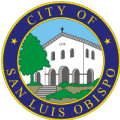The Sonoma area is home to 3,580 registered nurses (RNs), 520 licensed vocational nurses (LVNs), and 1,030 nursing assistants (CNAs). Together, these professionals deliver exceptional healthcare to over half a million residents of Sonoma County. Some of the area’s top treatment centers include Sonoma Valley Hospital, Kaiser Foundation Hospital, Sonoma Developmental Center, and Santa Rosa Memorial Hospital.
Latest articles
Home to a small population of 1,380 registered nurses (RNs), 220 licensed vocational nurses (LVNs), and dozens of nursing assistants (CNAs), Santa Cruz is a great place for aspiring nurses looking for a less hectic pace. While the demand for nurses isn’t as high in Santa Cruz as it is in larger metropolitan areas, this doesn’t mean nursing is any less demanding in this beach city.
To prepare for a career as a registered nurse (RN) in Santa Barbara, California, you must complete an associate’s (ADN), bachelor of science (BSN), or master of science (MSN) degree program. Licensure is required as well. These programs will prepare you to conduct diagnostic tests and analyze results, establish care plans, operate medical equipment, work with intravenous lines, and much more.
San Luis Obispo, California is home to a small but indispensable community of 1,160 registered nurses (RNs), 350 licensed vocational nurses (LVNs), and 580 nursing assistants (CNAs). To obtain a positon in any of these fields, you will need an appropriate amount of education and training, plus a license or certification.
While San Jose, California offers an abundance of opportunities for skilled registered nurses (RNs), licensed vocational nurses (LVNs), and nursing assistants (CNAs), it still takes hard work and the right education to get your foot in the door. Why? Because nurses must perform a number of multifaceted duties that vary for each of the roles above.
The city of San Diego has an impressive 23,670 registered nurses (RNs), 5,170 licensed vocational nurses (LVNs), and 8,320 certified nursing assistants (CNAs). These professionals work at major hospitals and healthcare providers such as Sharp Memorial Hospital, Scripps Mercy Hospital, UC San Diego Health System, and Alvarado Hospital Medical Center. To obtain employment at top-notch hospitals like these, you will need to earn a nursing degree or certificate, hold clinical experience, and obtain the proper license or certification.
Public and private universities are distinguished by the ways they are funded. Public colleges are typically financed by state governments, while private universities are funded mainly by private investments and donations. For this reason, the cost of education in private colleges and universities is relatively higher than their state-run counterparts. Private institutions must cover expenses by charging higher tuition rates and other academic fees, while governments partially subsidize public school operating costs like faculty salaries and research facilities.
Idaho’s educational system is supported by strong public colleges and universities that continually supply the workforce with highly prepared workers. These graduates include nurses who serve the health needs of a large and growing population. Idaho’s government provides funding and support for many public colleges and universities across the state, including community colleges, as part of its social investment.
The nursing profession offers a variety of opportunities, ranging from nursing assistants to advanced practice registered nurses. In Idaho, all levels of the nursing profession are currently experiencing robust growth. The United States Department of Health and Human Services projects a 30% deficit in the number of nurses needed in the state by 2020.
Nursing assistant and licensed practical nurse
San Bernardino offers a variety of opportunities for registered nurses (RNs), licensed vocational nurses (LVNs), and nursing assistants (CNAs). Part of California’s Inland Empire, San Bernardino is home to major hospitals such as St. Bernardine Medical Center, Community Hospital of San Bernardino, and Ballard Rehabilitation Hospital. To keep the area’s healthcare facilities running smoothly, Inland Empire has a large population of 23,610 RNs, 6,140 LVNs, and 8,160 CNAs.










